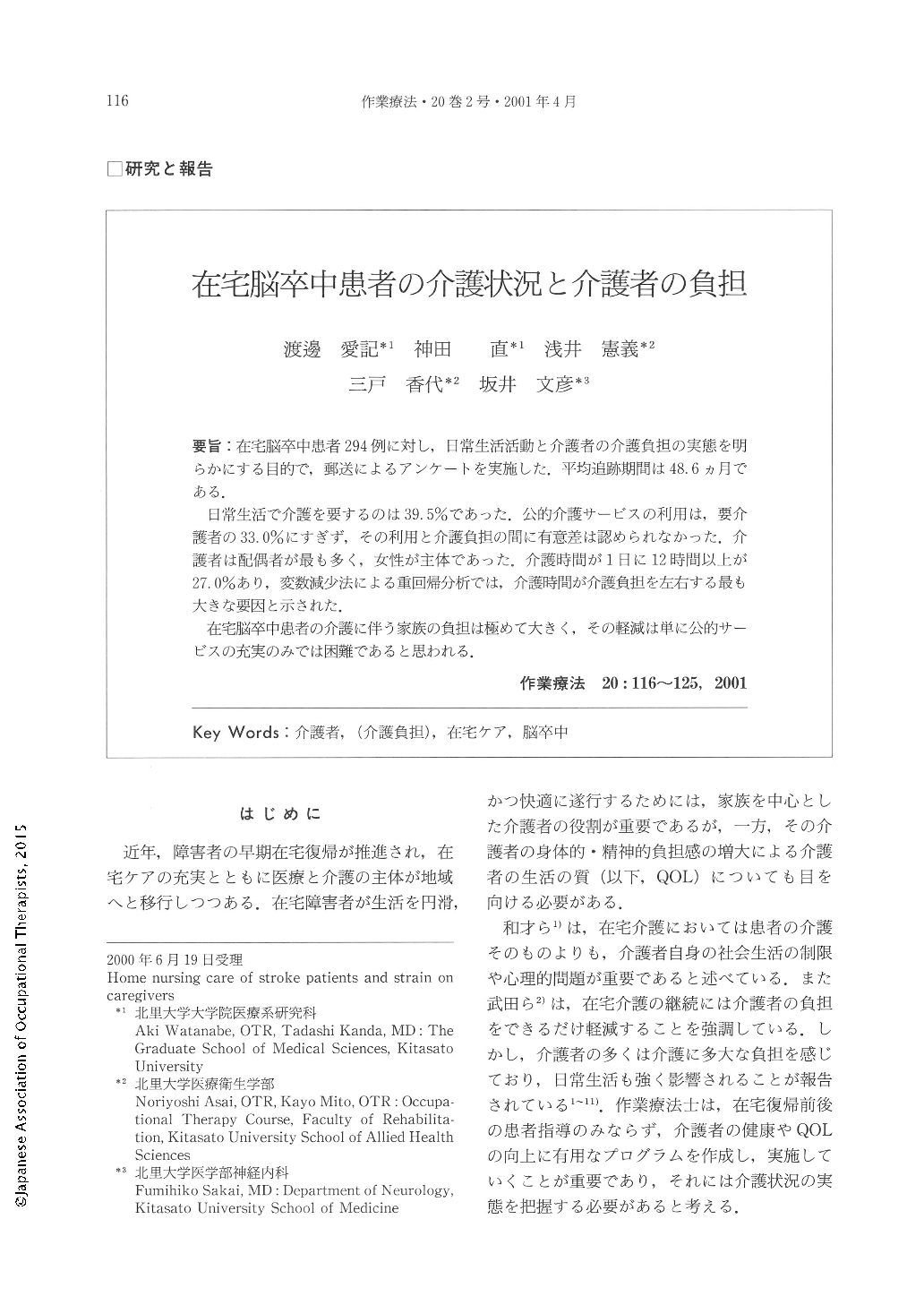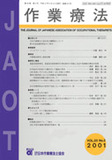Japanese
English
- 販売していません
- Abstract 文献概要
- 1ページ目 Look Inside
- 参考文献 Reference
- サイト内被引用 Cited by
要旨:在宅脳卒中患者294例に対し,日常生活活動と介護者の介護負担の実態を明らかにする目的で,郵送によるアンケートを実施した.平均追跡期間は48.6ヵ月である.
日常生活で介護を要するのは39.5%であった.公的介護サービスの利用は,要介護者の33.0%にすぎず,その利用と介護負担の間に有意差は認められなかった.介護者は配偶者が最も多く,女性が主体であった.介護時間が1日に12時間以上が27.0%あり,変数減少法による重回帰分析では,介護時間が介護負担を左右する最も大きな要因と示された.
在宅脳卒中患者の介護に伴う家族の負担は極めて大きく,その軽減は単に公的サービスの充実のみでは困難であると思われる.
Purpose The present study investigates activities of daily living and home nursing care environments of stroke patients after discharge. We also identify significant factors having an influence on caregiver strain.
Subjects and Methods Subjects were 406 consecutively hospitalized patients with acute stroke at Kitasato University Hospital between April 1993 and October 1997. Functional outcome, home nursing care environment, use of nursing care services and caregiver strain were assessed for 294 surviving patients by questionnaires mailed 1-3 years after discharge. The average follow-up period was 48.6 + 22.2 months.
Results Survey responses revealed that 81.5% of patients were completely independent in terms of their walking ability, 79.4% in toilet activities, 92. 5% in feeding, 76.9% in dressing, and 66.7% in bathing. Of the 254 patients who answered a question about rehabilitation, 65 (25.6%) underwent rehabilitation following discharge. Frequency of rehabilitation was once or twice a week in 41.5% of patients and once or twice a month in 29.2%. In addition, 33.0% of patients made use of various public nursing care services. However, that percentage was low compared with the total number of patients who required a caregiver's help. In addition, 63.8% of caregivers experienced strain in keeping their health, 66.3% in doing housework and coping at work, 75.0% in going-out, 66.0% in relaxing mentally, and 27.6% in sleeping. Thirty percent of caregivers spent 1-3 hours per day helping patients in nursing care. Furthermore, 27.0% spent more than 12 hours. Stepwise multiple regression analysis revealed that age, type of stroke, activities of daily living (ADL), hours helping patients, infrequent use of public nursing care services, and home nursing care environment were significant factors influencing caregiver strain.
Conclusion The present results demonstrate the severity of caregiver strain on those caring for stroke patients at home. Our findings suggest that caregivers should make effective use of various nursing care services provided at home and at care facilities. However, strain on caregivers is not entirely alleviated via the use of these services alone.

Copyright © 2001, Japanese Association of Occupational Therapists. All rights reserved.


